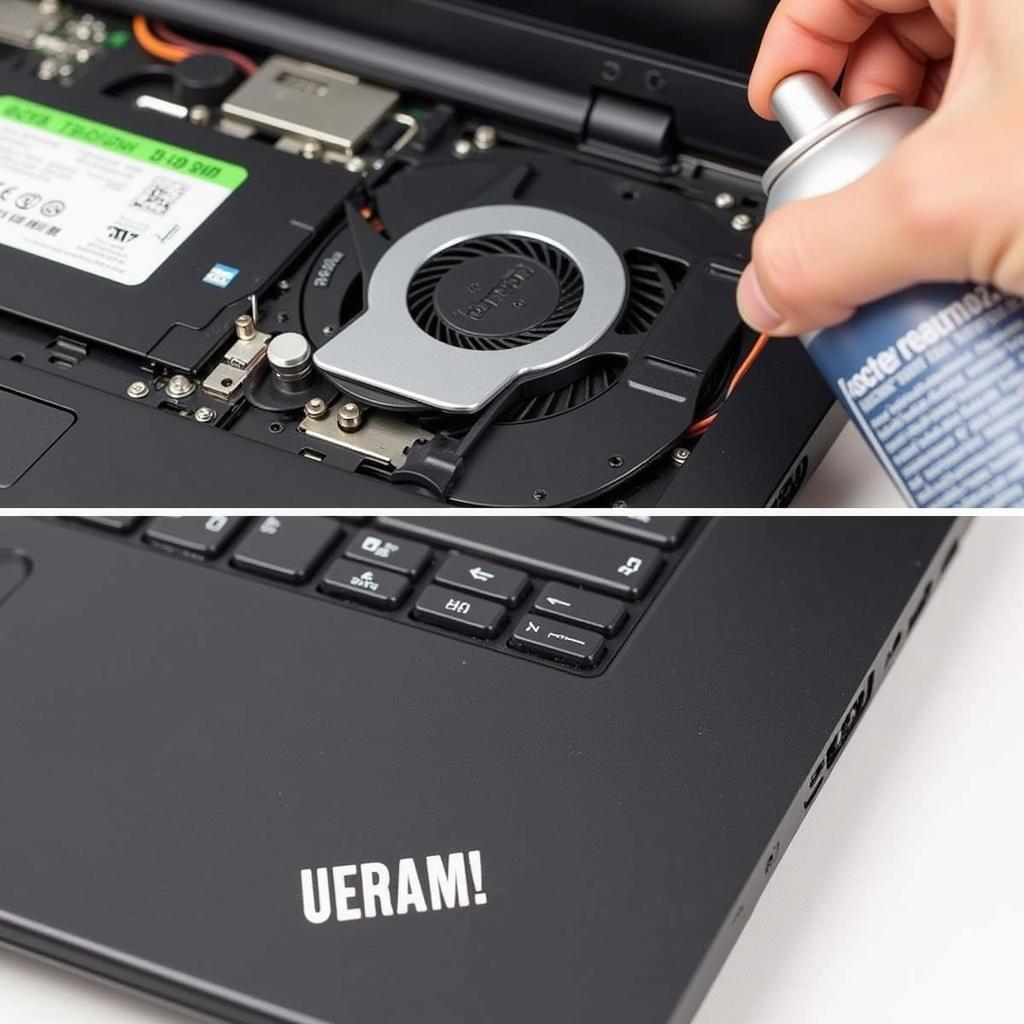The Lenovo G430 is a reliable workhorse known for its durability and performance. However, like any laptop, it can experience overheating issues, often indicated by a noisy or constantly running fan. This can be caused by various factors, from dust accumulation to failing hardware components. This comprehensive guide will explore common causes of Lenovo G430 Fan noise and provide effective solutions to keep your laptop cool and running smoothly.
Understanding Lenovo G430 Overheating: Why is My Fan So Loud?
Before diving into solutions, it’s crucial to understand why your Lenovo G430 fan might be working overtime. The fan is your laptop’s primary cooling system, drawing in cool air and expelling hot air generated by the processor, graphics card, and other components. When these components are under heavy load, the fan spins faster to dissipate heat, resulting in noticeable noise.
Here are some common culprits behind Lenovo G430 overheating:
- Dust Accumulation: Over time, dust and debris can clog the fan blades and obstruct airflow, forcing the fan to work harder and generate more noise.
- Outdated or Missing Drivers: Outdated or incompatible drivers, particularly for the graphics card, can cause components to overheat and trigger the fan.
- Demanding Applications: Running resource-intensive applications like video editing software or high-end games puts a significant strain on your laptop’s hardware, leading to increased heat generation.
- Background Processes: Multiple applications running in the background consume processing power and generate heat, even if they aren’t actively being used.
- Ambient Temperature: Using your laptop in hot environments or placing it on soft surfaces that block airflow can contribute to overheating.
Troubleshooting Lenovo G430 Fan Noise: Effective Solutions
Now that you understand the potential causes, let’s explore practical solutions to address Lenovo G430 fan noise and overheating:
1. Clean the Fan and Vents
Dust is a common culprit behind laptop overheating.
Steps to clean your Lenovo G430 fan:
- Power off your laptop and unplug it from the power source.
- Locate the fan vents, usually on the sides or bottom of your laptop.
- Use a can of compressed air to blow away dust from the vents and fan blades.
- Avoid using a vacuum cleaner as it can generate static electricity that could damage your laptop’s components.
 Cleaning Lenovo G430 Fan
Cleaning Lenovo G430 Fan
Pro Tip: For a deeper clean, you can consider opening up the laptop’s back panel. However, this requires technical expertise and should only be attempted if you’re comfortable working with laptop hardware.
2. Update Your Drivers
Outdated or incompatible drivers, especially for the graphics card, can lead to overheating.
Steps to update your Lenovo G430 drivers:
- Visit the official Lenovo support website.
- Navigate to the “Drivers & Software” section.
- Enter your laptop’s serial number or model number (Lenovo G430).
- Download and install the latest drivers for your operating system, particularly for the graphics card.
Pro Tip: Set up automatic driver updates in your operating system settings to ensure your drivers are always up-to-date.
3. Manage Your Applications and Processes
Running multiple demanding applications or having numerous processes running in the background can significantly contribute to overheating.
Steps to manage applications and processes:
- Close any unnecessary applications running in the background.
- Limit the number of browser tabs open simultaneously.
- Adjust the graphics settings of demanding games and applications to reduce the load on your hardware.
- Consider using a laptop cooling pad to provide additional cooling.
Pro Tip: Use the Task Manager (Windows) or Activity Monitor (macOS) to identify and close resource-intensive processes.
4. Optimize Power Settings
Adjusting your laptop’s power settings can help reduce unnecessary energy consumption and heat generation.
Steps to optimize power settings:
- Access the Power Options settings in your operating system’s Control Panel (Windows) or System Preferences (macOS).
- Choose a power plan that balances performance and energy saving, such as “Balanced” or “Power Saver.”
- Adjust the display brightness to a comfortable level, as a brighter screen consumes more power.
5. Reapply Thermal Paste (Advanced Users Only)
Over time, the thermal paste between the processor and heatsink can dry out, reducing its effectiveness in transferring heat. Reapplying thermal paste can improve heat dissipation but should only be attempted by users comfortable with laptop disassembly.
Pro Tip: If you’re not confident in your technical skills, it’s best to seek professional assistance from a certified technician for thermal paste reapplication.
Conclusion: Keeping Your Lenovo G430 Cool and Quiet
A noisy Lenovo G430 fan is often a sign of overheating, which can lead to performance issues and potential hardware damage if left unaddressed. By following the troubleshooting steps outlined in this guide, you can effectively address the root causes of overheating, keep your laptop running cool and quiet, and prolong its lifespan.


